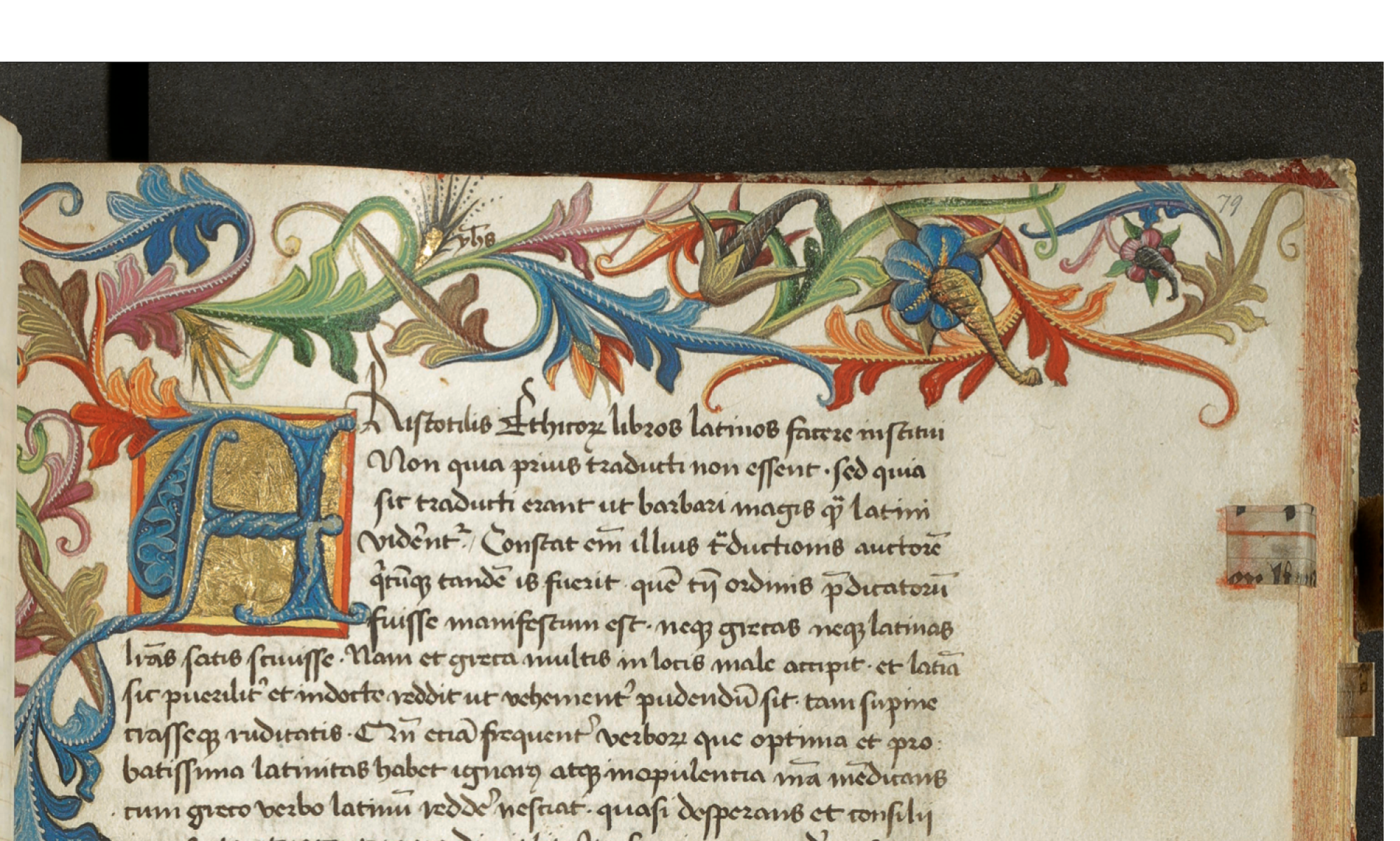The method of the edition is based on the tried and tested criteria that were already used in the critical edition of Nicholas of Cusa’s excerpts and marginal notes to the Latin translations of Proclus‘ writings (Cusanus-Texte. III. Marginalien 2. Proclus latinus. Die Exzerpte und Randnoten des Nikolaus von Kues zu den lateinischen Übersetzungen der Proclus-Schriften. 2.1. Theologia Platonis. Elementatio theologica, H.G. Senger (ed.), Winter Verlag, Heidelberg 1986). All types of annotations will be taken into account: detailed marginal comments, short highlights of content, excerpts, nota signs, underlinings and pointing hands (maniculae), corrections to the main text.
The manicula project will develop in four steps. First, the project will focus on the collection and transcription of marginalia to the works of Plato and Aristotle, as well as on the investigation of the main themes and interpretative approaches. In this phase, all the historical references that are useful for the chronological and geographical classification of Cusanus’ acquisition and study of the sources will be examined. In the second step, the marginalia will be studied in relation to the development of the philosophical thought of Cusanus himself. At this stage, the project will consider the reception of Platonic and Aristotelian works, comparing the marginals with some significant passages from Cusanus’ own works. The third step of the project will study the intellectual network in which Cusanus obtained, read and discussed the Latin translations of Aristotle and Plato. Finally, the last step of the project will deal with the material description, the reconstruction of provenance, and tradition of the codices.
